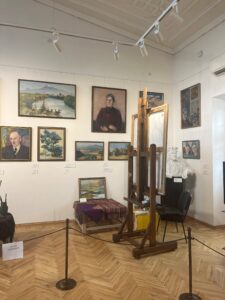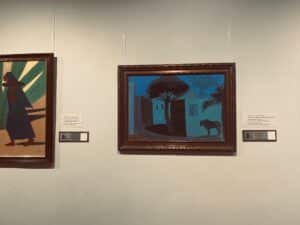The Martiros Saryan House-Museum is located in the three-story former home of Martiros Saryan. Located just a 10-minute walk from Yerevan’s central Freedom Square, on a leafy street now named for the artist, the building is open to the public and used to display his art and celebrate his life. During my study abroad program in Yerevan, I took an English-language guided tour of the museum.
Martiros Saryan is considered the father of modern Armenian painting. His expressionist art captures scenes in a simple, almost child-like form with an incredible use of vibrant color. Although he was born and trained as a painter in Russia, and although many of his best-internationally-known pieces come from his travels in the Middle East and North Africa, he is held as a national hero in Armenia, having worked hard during his life to advance Armenian causes.
The Saryan Museum is open from 11:00 – 17:00 every day, excluding Thursdays. Student tickets cost 750 dram (1.86 USD) and adult tickets cost 1500 dram (3.72 USD). An optional tour costs 5000 dram (12.41 USD) and is available in both Russian and English. These are available for purchase at the entrance of the museum.
My friends and I arranged our tour independently. We heard about Saryan from our teachers at the Armenian State Pedagogical University, where our study program with SRAS is hosted. Our teachers were immensely proud of their beloved Armenian painter, and so we decided that a visit to his museum to experience his art, cultural impact, and background was something we needed to do to better understand the culture we were visiting.
Originally born in Russia, Saryan studied at the Moscow School of Painting, Sculpture, and Architecture. There, he gained recognition with a series of colorful scenes from his travels to Egypt, Armenia, and the Middle East. Although he moved several times during the post-revolution years, he eventually settled in Yerevan and spent most of his career painting scenes of Mt. Ararat and the Armenian countryside.
Some of Saryan’s more famous works are from his early, pre-revolutionary traveling adventures: some depict the sandy streets of an Egyptian city; others are portraits of women beneath palm trees; still others tell of warm days in the Armenian countryside. In these paintings, he captures the beauty and vibrancy of everyday life. As described by Varduhi Adamian, art critic and research fellow at the Saryan Museum, “(Saryan) opened people’s eyes to the beauty of pure colors, and created a ‘portrait’ of Armenia that many were unaware of…”
In a subtle piece titled Egyptian Masks, Martiros Saryan opened people’s eyes to the pain that Armenians suffered while living under the Ottoman empire, which violently oppressed Armenian culture. This culminated in the Armenian Genocide in 1915. That year, Saryan painted this artistic response, in which one mask shows the sorrow and anguish of the surviving Armenian people, another depicts their fear, and another shows a glimmer of hope for the future. The meaning of Egyptian Masks is not obvious, and so I was thankful that, as we stood in front of this artwork, our tour guide explained the history of the Armenians. This made Saryan’s intended meaning of the masks, and the impact that this painting had on bringing awareness of the experience of the Armenians to those outside of Armenia. While most of this information is available online, hearing the interpretations in front of the actual paintings from a live person was a major benefit of taking the guided tour.
My favorite Saryan painting depicts a view of Ararat from Yerevan, in which Mt. Ararat stands tall and snow-capped in the distance. Mt. Ararat is considered the birthplace of the Armenian people and, although it now stands inside the borders of Turkey, it still features strongly as a symbol of Armenian national identity. In his painting, Sairan captures the magic of Ararat and the countryside on a bright, clear day.
Throughout his paintings, Martiros Saryan uses a child-like vision of the world and vivid colors to communicate the beauty of life – from the great sorrow that is sown into history, to the simple wonders of everyday life. Saryan championed the Armenian people and captured the majesty of their homeland. He remains a celebrated hero in Armenia and visiting his museum, on its peaceful green street, is an affordable and highly enlightening way to spend an afternoon.
You’ll Also Love
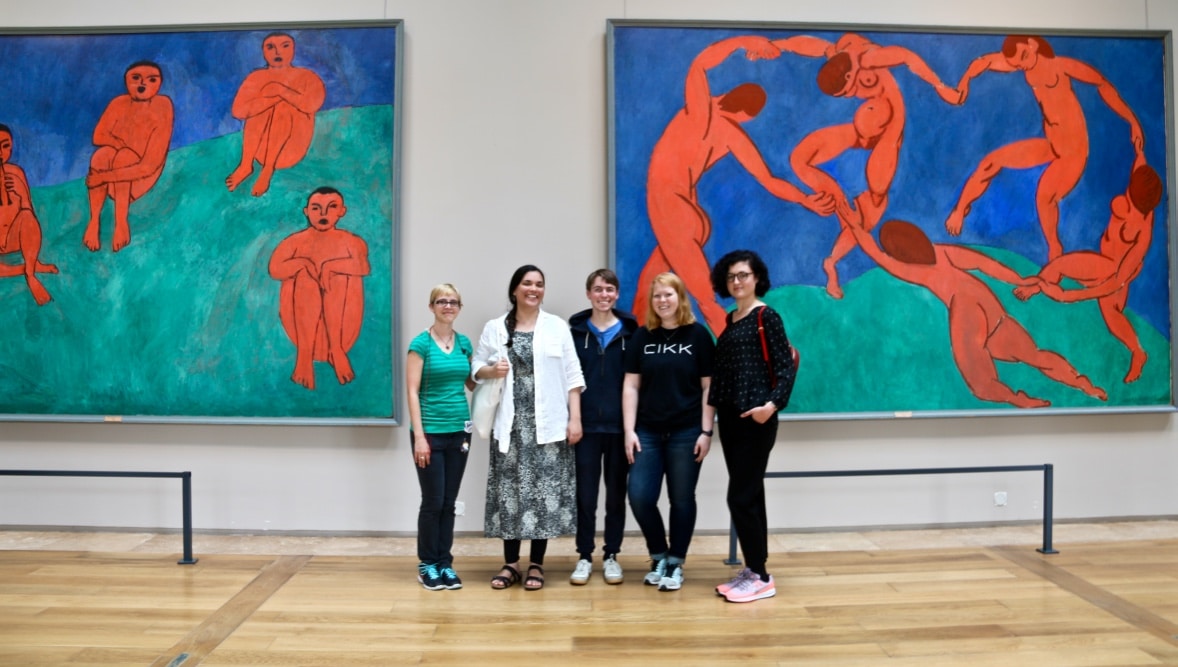
Museums as Self-Care
In 2018, doctors in Montreal began prescribing visits to the Montreal Museum of Fine Arts (MMFA) for patients experiencing depression, anxiety, and other health issues. This innovative approach to mental health treatment was launched under the initiative of the MMFA in collaboration with Médecins francophones du Canada (MFdC). The program allows physicians to provide patients […]

Book Review of Lavash at First Sight
Taleen Voskuni’s Lavash at First Sight (2024) is a funny and lighthearted sapphic romance about two Armenian-American women roped into promoting their respective Armenian food companies at a food-packing conference in Chicago offering a chance to win a Super Bowl advertisement slot. The two are just hitting it off when the parents of one recognize […]
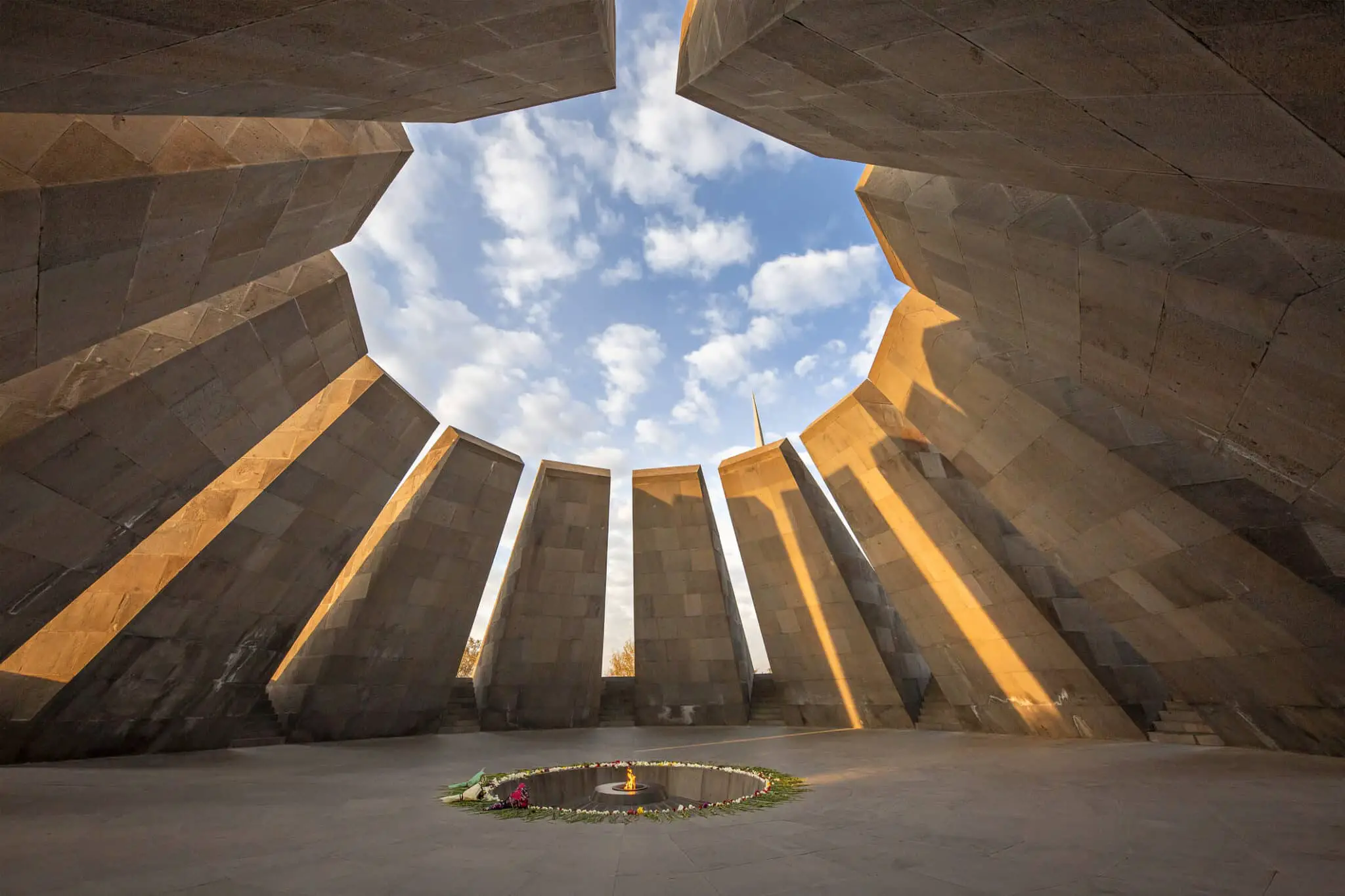
Yerevan Museums: The Best in History and Art
The following is a brief introduction to some of the best Yerevan museums for history and art. As SRAS has recently launched study programming in Armenia, MuseumStudiesAbroad.org is also now opening a new region that we hope to fill with museum reviews and artist biographies! History Museum of Armenia The History Museum of Armenia holds […]
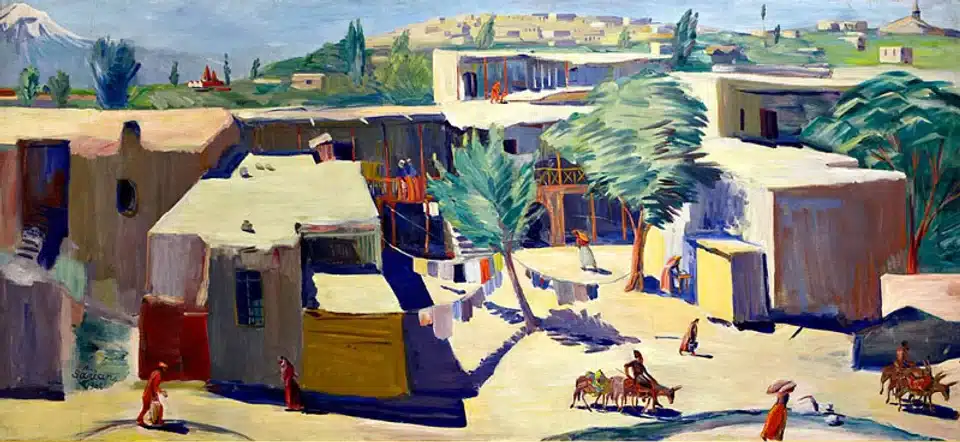
A Visit to the Martiros Saryan House-Museum in Yerevan
The Martiros Saryan House-Museum is located in the three-story former home of Martiros Saryan. Located just a 10-minute walk from Yerevan’s central Freedom Square, on a leafy street now named for the artist, the building is open to the public and used to display his art and celebrate his life. During my study abroad program […]
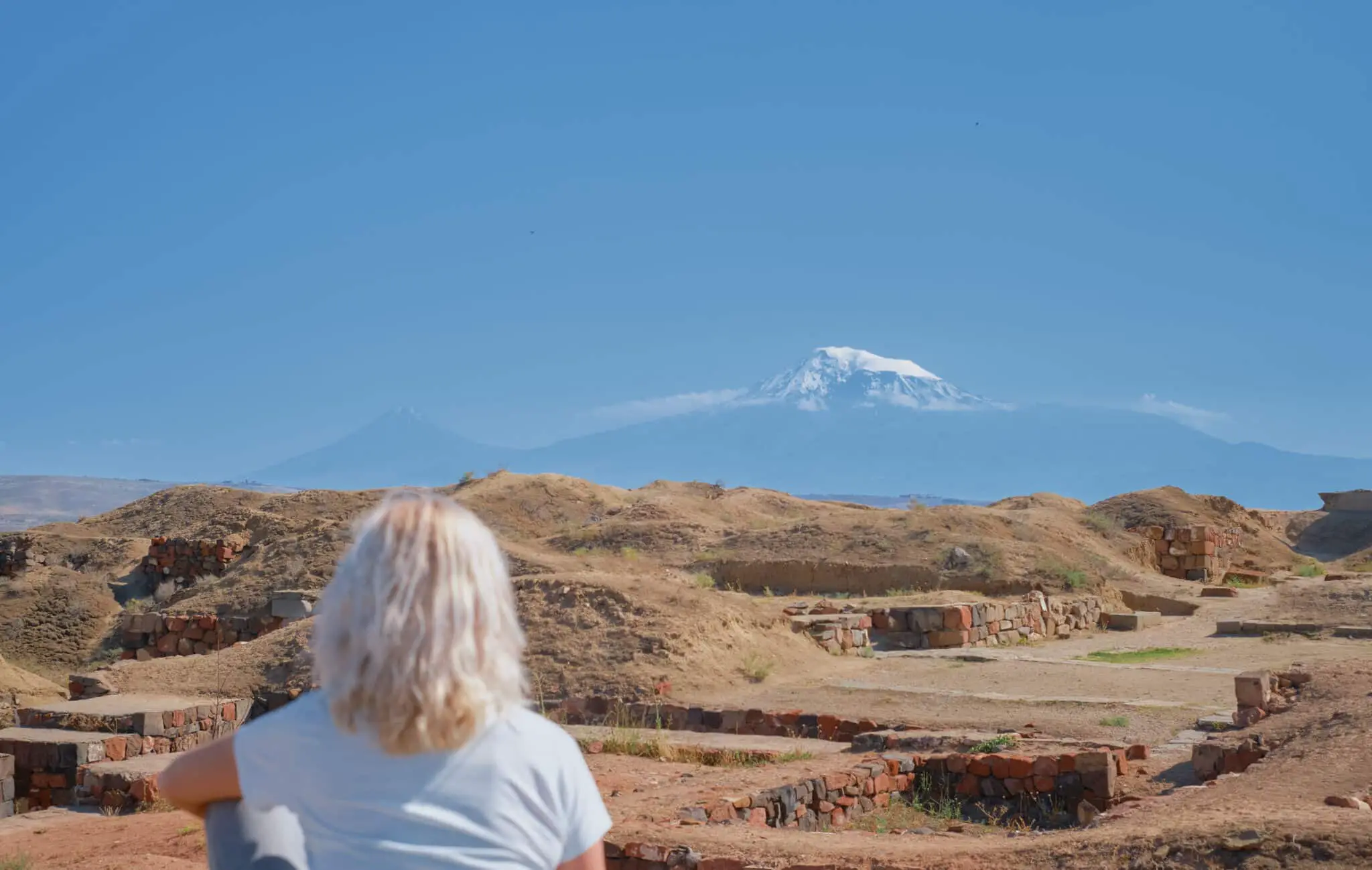
SRAS Visit to Erebuni Museum Complex and Archeological Ruins
The fortress of Erebuni, once the great capital of the mighty Uratu Kingdom, is located on the outskirts of Yerevan. The ruins of the citadel are flanked on one side by quiet mountains – their rocky slopes reaching up toward the hot summer sun. On the other side is Yerevan and the Ararat plain. The noise of […]



